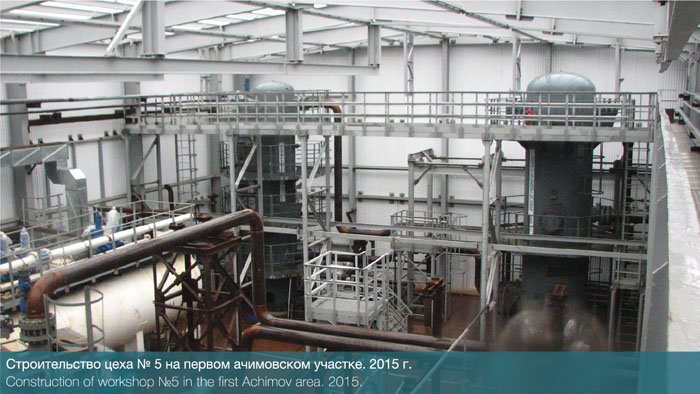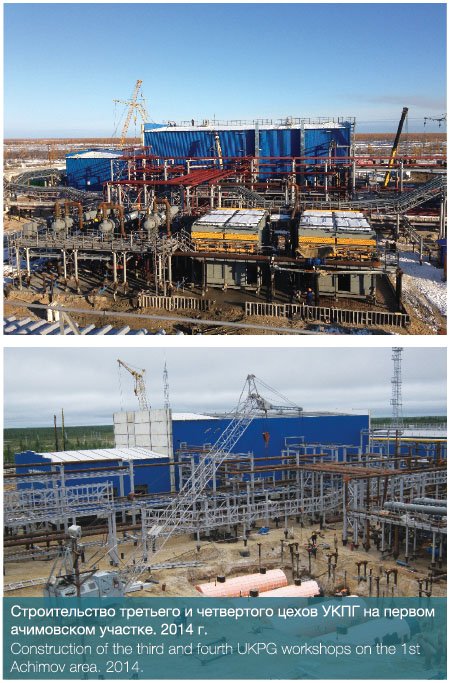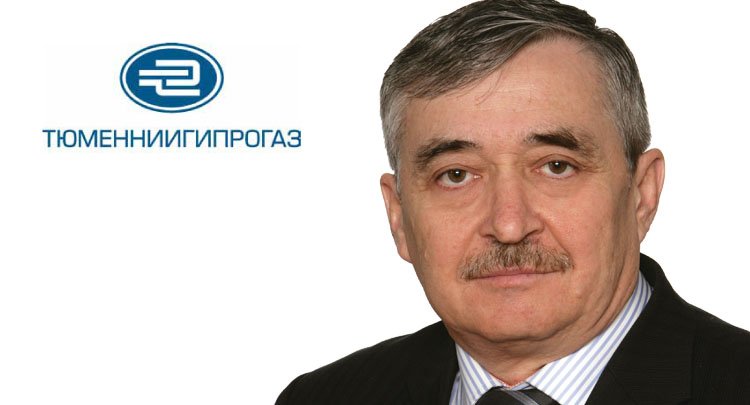The ROGTEC Interview: Valeri Kurtbidinov, Chief Project Engineer at TNGG
The future of Urengoy region lies in the development of Achimov deposits. Last year, TyumenNIIgiprogas began working simultaneously on facility construction projects in Areas 2, 4 and 5. Today we interview Valeri Kurtbidinov, the projects Chief Engineer and design manager for the construction of the facilities at Areas 1 and 4 of the Achimov Horizon.
NEW CHALLENGES
How long have TyumenNIIgiprogas worked on the Achimov deposits?
The design team of the company started working with these deposits in 2006, when we began construction on the facilities ready for pilot production at Area 1. Last year, we designed the construction of the facilities at Areas 2, 4 and 5. The design of Area 3 is currently being tendered, and the engineers have prepared all the required documents. We are of course hoping to win this bid.
How many areas in total are expected to be developed?
According to the “Unified Development Plan for the Achimov Deposits of the Urengoy Oil And Gas Condensate Field”, Gazprom are planning to develop five areas with the Achimov. Apart from these areas, the Achimov deposits are also being developed in Samburg, East Urengoy, Novy Urengoy, Evo-Yakhinsk license blocks, operated of course by different operating companies
What are the specific targets of this project?
The Achimov deposits occur at depths of 4km. The hydrocarbons produced from these deposits is characterised by the following features – high pressures and temperatures at the wellhead, high level of gas condensate in produced fluid, high content of paraffin’s in the gas condensate, which explain high values of formation and, therefore, wellhead pressures of well clusters, high values of wellhead temperature of gas, high potential content of gas condensate in the produced formation fluid, high content of higher-boiling paraffin’s in gas condensate, which explains its high clouding temperature of plus 18 °C.
We are planning to build a stabilisation facility for the Achimov deposits at the Nadym-Pur-Tazov region near the Central Gathering Station 2, where unstabilized condensate from Areas 4 and 5 are going to be received. 
Are the areas within the Achimov very different from one another?
Mainly in pipeline capacity. The assumed capacity of one pipeline in Areas 1 and 2 is 5 mil. m³/day, while in Areas 4 and 5 it is 8 mil. m³/day.
Does Area 4 stand out against the other areas?
It is not very different. There are 21 gas condensate clusters in the field, and a central processing facility (UKPG), field support base, water intake site and a camp to accommodate the personnel of Areas 4 and 5 is currently being designed.
At the UKPG, as agreed with the client, three trains of 8 mil. m³/day capacity each (two working and one standby) have been accounted for. Gas processing is going to be conventional, using the low temperature separation method.
The workshop is designed for gas and condensate processing, where condensate will be exported unstabilised. The dry natural Achimov gas processed at the UKPG in accordance with Gazprom’s internal standard (STO) 089-2010 is going to be supplied at its inherent pressure via the connecting gas pipeline to the gas header of Pipeline III and IV of the East Corridor. Unstabilised gas condensate processed at the UKPG to Gazprom’s STO 5.11-2008 standards is going to be supplied via the planned condensate pipeline to the planned condensate stabilisation facility, which is expected to be commissioned (like UKPG) in the 4th quarter of 2017.
Does your past experience help you?
Absolutely. Even when everything has been designed as per codes and estimates, problems may occur. It is normal and understandable that during operations details may arise that could not have been forecast. As an example, once workshops 3 and 4 had been started in Area 1, we had a problem connected with the uneven distribution of sour gas from the joint header to the four workshops. We are currently suggesting to tie-in an additional assembly with a controlling device at the joint header, which would make it possible to distribute the flows more evenly. 
Another key problem is waxing and plugging during wax crystallisation, which plug the internal surface of the pipeline. To prevent this, methanol is fed and distributed to the gas condensate well clusters and to the process facility.
THE PIONEERS
Who was the first to design the construction facilities of the Achimov deposits?
The project for the construction facilities at Achimov Area 1 was started in 2006 under the management of Pavel Krushin, our Chief Project Engineer, and was the first such project in Russia. In 2007, under the management of Maksim Gagarin, Chief Project Engineer (currently Deputy General Director for design and survey work), the pilot area for the construction facilities was delivered.
ZAO Achimgaz began construction of the facilities for Area 1 in 2007-2008, and this project is now almost completed: four workshops are already in operation and the fifth one is being built. Half of the clusters have already been drilled, while ZAO Achimgaz is planning to drill the rest earlier than projected, before 2019.
How did you manage to resolve new technical problems that you encountered?
The task was quite challenging: when you are doing something for the first time ever, there’s no one to learn from. However, our designers resolved all the problems successfully. Most tasks have already been solved and tried at the design stage of Achimov Areas 1 and 2. Natural gas from well clusters, whose pressure initially exceeds 30 MPa, is reduced by controlling devices to the gas transportation pressure of 14.4 MPa. To this effect, the designs use pipelines with extra thick insulated walls and special valves. The sour gas with optimal process pressure and temperature is supplied via the gathering system to the UKPG for further processing.
In 2006 you were the first to work at the Achimov deposits. Since then, have other institutes learned how to work with these deposits?
YuzhNIIgiprogaz worked in the Samburg license block, and Giprotyumenneftegaz worked in the East Urengoy license block. Some time ago we delivered construction projects for ZAO ROSPAN INTERNATIONAL, but we had to withdraw from drawing up the detail design documentation, as all our resources were engaged in designing Areas 2, 4 and 5 of the Achimov deposits. In short, we have adequate experience for similar fields, and I believe we have more such experience than others.
Is this experience going to be useful when developing other fields?
I have not come across the development of the Achimov deposits outside the Yamal-Nenets Autonomous Okrug. The question is in fact interesting, so if there are any offers, our company will be able to handle such projects.
How did the development of the Achimov deposits affect the overall life of the Urengoy field?
It substantially extended the field’s life. The field has been in production since 1978. When you look at the map you can see that the area’s terrain is very much industrialised. The UKPGs of the Senomanian, Valanginian and Achimov, are 6 to 7 km apart, and roads, gathering lines and pipelines run all across the field. That’s why bringing new deposits into operation is the only course of development.
It is for a reason that within OOO Gazprom Dobycha Urengoy, a special gas field directorate, RAO (which stands for Achimov Deposits Development), has been established, which, apart from Area 2, will also operate Areas 4 and 5.
And for how long will the Achimov deposits be developed?
All the equipment is designed to work for 30 years. The development project is for the period until the year 2069. Of course, the pressure will drop with time, and we plan to construct booster stations from 2025-2028.
THE ACHIMOV DEPOSITS ARE GOING TO LAST
What else will be done in Area 4?
The next step should be to prepare, in detail, the design documentation. Preliminary cost estimates have already been made, and now they are being approved by OAO Gazprom. In Areas 4 and 5 we have included a 20% capacity margin for the core process equipment. These areas are not well studied because there was no period of pilot production for them, that’s why the margin is required. We have design the piplines so that they can work from minus 60% to plus 20% of the nominal capacity. Once the first clusters are drilled, the situation will become more clear.
Anyway, we are not going to stop working with the Achimov deposits in the near future. Just see for yourself. In 2006 we prepared the Achimov Area 1 for the pilot production period. In 2009, pilot production began. In 2014, the full-field development facility was commissioned. The end of Area 1 construction is projected for 2019. All this time we have supported and supervised the construction as the designers. Areas 4 and 5 are expected to be started up in the 4th quarter of 2017, so we are going to support these projects at least until 2025.
How is the approval process progressing?
The main problems in this view are caused by the lack of uniform code requirements. The SNiPs have been cancelled, and Codes of Regulations are issued to replace them, but they often contain vague and conflicting requirements. At the same time, the requirements to design and detail design documentation are becoming more and more stringent.
Approvals is another interesting subject. Originally, FAU Glavgosexpertiza Rossii (Russian Main State Expert Review Agency) was created as “one-stop shop” system aimed at shortening the period from investing capital to gaining profit. But it didn’t work as designed. The client, before the design documentation is submitted to the Main Expert Review Agency and to the General Designer, has to obtain a large number of approvals. High-rise facilities must be first approved by Rosaviatsiya (Federal Air Transport Agency) and the Military Command. The land reclamation project should be approved by the municipality administration. The buffer zone project should be approved by the Hygiene Centre. The project of treated wastewater reinjection should pass the environmental protection expert review. The land plot should have the land survey documentation arranged. The fishery section of the design document should be approved by FGBU Nizhneobrybvod and by Nizhnneob territorial department of the Federal Fishery Agency. On top of that, the facilities of OAO Gazprom go through the industry’s expert review first which is followed by the state expert review.
But the most important thing is the final result that is assessed by the client.
I can’t complain about this aspect. The client values our job and commitment to the business. Of course, the designers’ job is always commented on, this cannot be avoided. However, it’s us who are being approached by new clients. It’s no secret that thanks to the support of OOO Gazprom dobycha Urengoy, Areas 4 and 5 have been assigned to TyumenNIIgiprogaz for designing.











